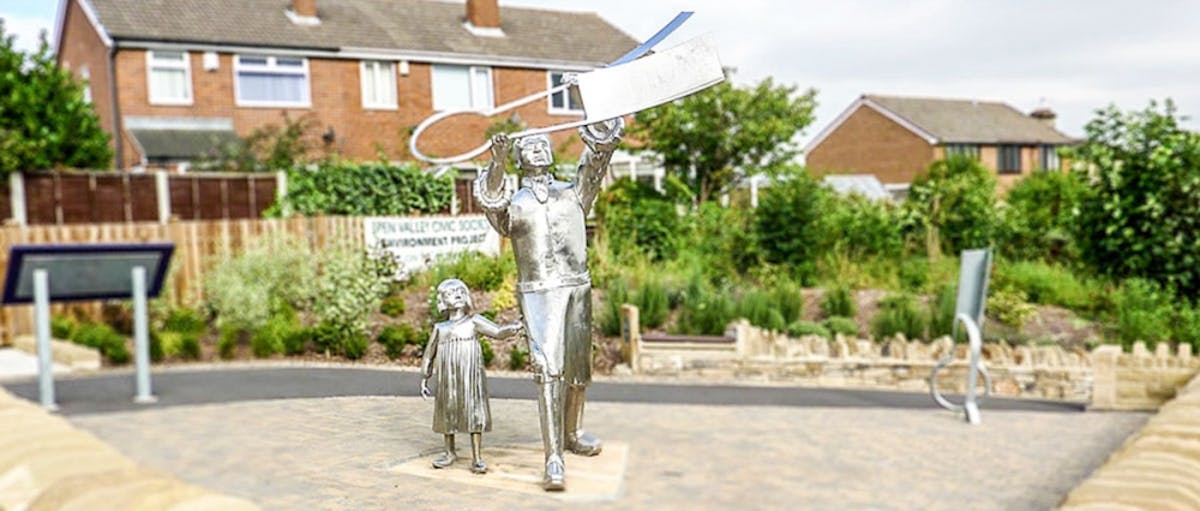Luddites
Luddites
SVCS's statue of a Luddite (pictured above) is the only one in the country and is at Sparrow Park Liversedge, which we created (see Sparrow Park under 'Projects'). So what's the story behind it?
"Luddite" is used jokingly to describe someone who doesn't take kindly to new technology. But in 1811, life was no joke for people hand-producing textiles. Newly-invented machines were putting them out of work, at a time when no work meant starvation. Croppers in West Yorkshire were badly affected- their skilled job of snipping the surface of new woollen cloth with large heavy shears to make it smooth had been well-paid. Secret groups formed in Nottingham, and then in Yorkshire and Spen Valley, calling themselves "Luddites". They tried to save their livelihoods by attacking mills to destroy new machinery. They were seen as dangerous industrial terrorists and the Government sent spies and hundreds of soldiers to suppress them. In February 1812 Luddites attacked waggons on Hartshead Moor which were bringing shearing frames from Marsden Huddersfield to William Cartwright's mill at Rawfolds Cleckheaton. They smashed the machinery and got away.
Their most notorious action in Spen Valley began on the night of 11th April 1812 when over 100 men marched silently from the Dumb Steeple at Cooper Bridge to Cartwright's Mill, intent on breaking in and smashing the hated shearing frames. They attacked the mill in the early hours of 12th April 1812. Mr Cartwright was inside with 5 soldiers, ready for them, with numerous other soldiers who were "on call", billeted locally (eg. at The George Cleckheaton). After a fierce battle the attack failed. Many Luddites were injured but managed to escape. Samuel Hartley and John Booth, badly wounded, had to be left behind. They were captured and taken to the Yew Tree Pub (now Headlands Hall), but large crowds of local sympathisers gathered, so they were moved to the Star Inn at Roberttown. Despite being interrogated, they refused to reveal names of their fellow Luddites. The story goes that John Booth beckoned Rev Hammond Roberson (a friend of Mr Cartwright) and asked him if he could keep a secret: when the Reverend said yes, John Booth replied "So can I" and then died.
After the Rawfolds incident, mill owners were targeted: Cartwright escaped an attempt on his life but William Horsfall from Huddersfield was shot and killed. Public opinion turned against the Luddites. Sixty-four men were charged and remanded in York Castle. After a trial in York, 17 Luddites were hanged in January 1813, and their families left destitute.
To read more about the luddites in Liversedge click here
To walk in the steps of the Luddites see our Luddite Trail under 'Things to Do' section

